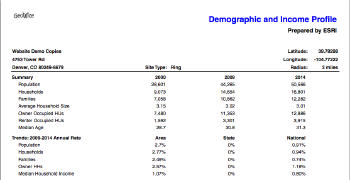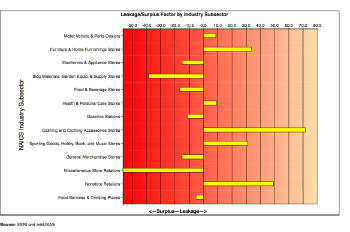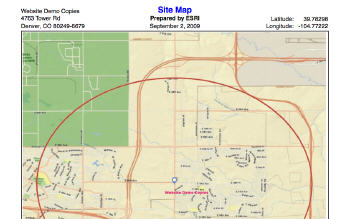Chris Gibbons is the economic development director in Littleton, Colorado. He's been plotting and scheming for job growth for decades. At first the city's goal was to entice businesses to set up shop there. But in time he learned that true growth involved growing the businesses that were already in the city. In 1987, Littleton stopped the recruiting efforts and began its economic gardening efforts, focusing specifically on growing existing local companies.
Part of that decision harkens back to research by David Birch of MIT. Back in 1979, in The Job Generation Process (Job Creation in America: How Our Smallest Companies Put the Most People to Work-1987) he documented that between 1969 and 1976 two-thirds of new jobs came from small companies. Specifically, that growth came from stage one and stage two companies, those with 1-9 and 10-99 employees respectively. (You can learn more about the stages and find some great tools to look at businesses at YourEconomy.org.)
Littleton: A Resource for Economic Gardening
Littleton was the pilot city for economic gardening and became a resource for other communities using the model. What Littleton offered in its economic development team were database searching, GIS and search engine optimization tools that helped guide smaller companies. When other municipalities tried to duplicate those services, funders were often disappointed at the start up time and cost. How, Gibbons wondered, could those services be "jumpstarted"? That led to a number of successful pilot projects in Michigan and Orlando. In September of this year the state of Florida selected a team, led by the University of Central Florida, with support from Gibbons, to develop an economic gardening pilot.
That work got Gibbons thinking about the needs of small companies, specifically the business to consumer (B2C) startups that are typically focused on local sales. How could they get access to the data they needed to grow their businesses? When he served as a consultant to businesses, Gibbons would spend six months producing key maps used to guide growth for a fee of $30,000. Today, if you have the right skills and tools, that production would take just a few hours and include far better data and more useful analysis, he notes.
Gibbons' questions led him to ESRI, which had both the software and the data to produce such maps. ESRI matched Gibbons up with its business partner GeoWize of Boulder, Colorado. Gibbons has worked with the company's president, Wayne Kocina, for the last year or so putting together their "vending machine" solution.
Kocina knows his way around GIS technology, with 20 years in the field, but is quick to point out that small business owners don't have the time, money, knowledge or energy to invest in GIS software and learn to use it. And, while ESRI's new Business Analyst Online turns the software and data of Business Analyst into a service, it's still a hurdle for the small business owner to learn the software. He and Gibbons envisioned a kind of "vending machine" for small businesses. The business owner would visit a website, key in the business's SIC code (Standard Industrial Classification, a business classification, as defined by the U.S. Department of Commerce), address and a credit card number. A short time later a stock set of key maps and reports would be delivered. "Just like a vending machine - put your quarters in and get your candy bar out," Gibbons explains. It should be that simple.
After some months working with ESRI on the vision and licensing issues, Kocina has Wize Advantage set for launch in late September. The vending machine analogy will be in place, though the cost for the bundled set of maps will run $325, quite a discount on the $850 value if the maps were generated individually.
While the economy is seemingly turning upward, Gibbons and Kocina are optimistic about the offering. Still, they are working to minimize risk. For the first year, the maps will be created "behind the curtain" by hand. There are two reasons for that. First, ESRI has not completed the full API to Business Analyst Online, so it's not possible to code a fully automated application. Second, a year of running the reports by hand will provide information on demand and may even provide insight on the best way to code the app, when the API is complete. Kocina is aiming for one-day turnaround at launch.
 |
Spreading the Word
Gibbons already has a great "distribution" network lined up. Not only does he have contacts with all the economic gardening communities he's helped, he can also depend on chambers of commerce. GeoWize will be looking to offer the app through these organizations, with a cut of each purchase going back to the chamber. That model is common in other services chambers offer, such as insurance coverage. There are also local and regional economic development agencies and programs and some statewide efforts that could offer the service. Gibbons points to Georgia's Entrepreneur Friendly Communities initiative as one that would benefit from offering GeoWize's WizeAdvantage.
 |
 |
Kocina links WizeAdvantage to President Obama's inauguration speech, in which the president pointed to jobs as the key to the economy. Kocina says 68% of jobs in the U.S. come from first and second stage companies. That same group of companies also accounted for 86% of job growth during the past 15 years. Kocina sees GeoWize's WizeAdvantage program as specifically geared to those businesses. He says they want to "give the little guy the big guy competitive advantage."